“The Lyttelton restaurant will receive their grouse delivery from the Scottish Highlands in the early hours of the morning, delivered by a convoy of Land Rovers” - so read a press release for the Mayfair restaurant late last week.
But lucky old me - instead of waiting for the grouse to be chauffered down south - I headed up north, putting me in the perfect location for eating this season’s first grouse on The Glorious Twelfth. I was a guest on a walked-up shoot at Allargue - a family estate fifty miles west of Aberdeen. The six guns shot twenty one and a half brace (43 birds), meaning that we were able to pick out the eleven youngest and plumpest for a celebratory supper last night. The rest of the birds (and 15 white hares) were sold to a game dealer, where they were undoubtedly whisked down south, and upsold to chefs desperate to get their hands on The Highland’s freshest produce.
The Twelfth is an extraordinary day to be part of. And so I thought that I’d put together a little guide for those who were interested, which might help explain why grouse is suddenly on the menu - and how it gets from the hill to the plate.
Why August the Twelfth?
All game birds have specific seasons. Partridges and duck can be shot from 1 September onwards and pheasant shooting starts on 1 October. The dates were decided by the 1831 Game Act, and as the sport is steeped in tradition, it’s little surprise that they haven’t changed since.
The reason that The Twelfth takes place on 12 August though is because the eggs usually hatch around May. This means that by August 12, the grouse chicks are two-to-three months old, and are no longer dependent on their parents. The chicks are old enough to fly and feed and fend for themselves.
Interestingly, because of this year’s late spring, there were still some very young birds this year - referred to as “cheepers” - because of the cheepy noise they make as they fly. (Older males make a “kebak, kebak” type noise, and older females are often quiet during flight.) ‘The guns’ (those shooting) were told to avoid shooting a “single, sticky old hen”, as the likelihood was that she was still bringing up a “cheeper” - which should also be avoided, and left until later on in the season.
It means that during the split second where a covey of grouse take off, not only do those shooting have to lift the guns, nestle them in the right point in their shoulder, flick the safety and look down the barrels to aim, but they also have to identify which grouse in the covey can and can’t be shot. Trickier than it looks - and certainly something far beyond me.
Walked-Up, or Driven?
Shoots take two different formats, known as either ‘walked-up’ or ‘driven’ days.
The more formal type is a ‘driven shoot’. This is where the guns are driven to a line of butts - a string of reinforced dug-outs in the hill, which cover and camouflage them. Once they’re positioned, then twenty-or-so ‘beaters’ set off.
Now, a beater is a funny thing. I’ve often done it. A beater might be a local gamekeeper, recruited to help choreograph the day. Or they might be a underkeeper’s younger sister, keen to earn a few quid. It might be a tweed-clad old boy, in it for the company and the free dram of whiskey at lunch time. It could be a lady eager to exercise her spaniels, or a couple of university friends - who have twigged on to the fact that you can actually get paid quite well for going on a walk on the hills.
The motley group are ordered into a line which can be anything from a couple of hundred metres long, to a couple of miles long. Each making a racket by flapping flags, they walk slowly forwards, driving the grouse toward line of ‘guns’ hidden in the ‘butts’. One day will often involve five to six drives - all of which require the beaters to be repositioned on the hill, and start the long trudge toward the guns all over again. It sounds easy, but chuck in a few peat hags, knee-high heather and gullies - and the beaters more-than earn their £50-ish per day.
Keeping in line on a walked-up shoot
Walked-up days are a very different ball-game. Far more relaxed. The guns (and any lucky add-ons, like myself) all form one line, and sweep the hill along a pre-planned route. The main importance of the day is to stay in the line, because the guns only shoot in front, or behind them - but never sideways - so as long as you don’t whizz ahead or lag behind, then it’s pretty safe.
Having said this, there is one famed anecdote in the game book at Allargue, from a couple of centuries ago, where one of the guns - fixated on the grouse - swept through its flight, and fired sideways, shooting out the eye of the person stood next to him. It is chronicled in a typically understated fashion, dripping in British phlegm - something about it being a “jolly good day - apart from poor old Jock who lost an eye…”
Argocat
Mika being an excellent retriever
So yesterday it was just the six guns and the three of us lucky extras walking in the line. Then there was the gamekeeper Neil and his two labradors (Ruby and Mika) who retrieved the birds, and an underkeeper called Robert, whose job was to drive ‘The Argo’. In the early nineteenth century, a horse would have been recruited to carry the bag of birds as it got heavier and heavier throughout the day. But its role became somewhat redundant when ‘Argocats’ hit the scene - its big number of absurdly thick-tread tyres meaning that it can roll pretty much anywhere over the hill, through streams, thick gorse, up and down crags.
On The Hill
As I have mentioned in previous posts, I am not a natural-born killer. But I’m a carnivore through-and-through, and was delighted to be invited to walk in the line. Everything aside, a day in The Highlands makes for the most excellent safari.
Wading through knee-high heather, and squelching through wodges of moss, you can easily become distracted, spotting final-blasts of bell heather and elusive sprigs of lucky white heather. Clusters of cranberries, blaeberries and cloudberries, spiked juniper and rosebay willowherb swaying in the breeze. There are carpets of yellow-green and rusty red sphagnum - a thick moss allegedly used to soak up blood during the Second World War. On dry days, blasts of pollen blows up from the heather as you stomp from clump to clump, filling the air with a sweet, heather-honey smell. And on wet days, rain clings to the gorse and heather fronds, and rubs off on the vulnerable trouser-gap between gaiters and coat.
Lunch on the hill on the Glorious Twelfth
If it’s sunny, then lunch is eaten on the hill. If it’s raining, then lunch is also eaten on the hill. The best kind of high-energy, picnic treats, which taste all the better because you’ve earned it. Ginger beer, ham sandwiches, crisps, chocolate bars….and ‘pudding sandwiches’.
Pudding sandwiches are apparently unique to The Allargue shoot, and were first invented in 1944. Though there’s no real historical documentation for this. Only claims made by people who, well, who were eating picnic on the hill back in 1944. Pudding sandwiches are quite easy to make: brown bread (with the crusts cut off), butter (NOT margarine), sultanas, brown sugar. They were supposedly whisked together as an impromptu pudding, when guests arrived, and there was little else in the pantry. Genius.
Pudding Sandwich
A Traditional Twelfth Supper
One of the best bits about supper on The Twelfth at Allargue is the joint-preparation. The beauty of a ‘family shoot’, rather than a posh shoot - where there’s something of a disconnect between shooting a bird and it magically appearing on a plate.
Traditional Twelfth Supper: grouse and all the trimmings (breadcrumbs, bread sauce and game chips)
There are quite a few steps involved, which I will do my best to describe:
1. Plucking
Hold the grouse with the legs pointed toward you. Starting breast up, hold the bird tight, and sharply pull off the feathers away from you. As the skin becomes more and more exposed, stretch it taught - trying not to nick it - and work your way round the grouse, putting the plucked feathers in a bin bag to keep things neat.
Plucking the grouse
2. Jointing
Grouse bones are quite fine, so a pair of heavy-duty kitchen scissors should suffice. But if you’re lucky enough to have a pair of meat scissors, then it’s the perfect opportunity for an outing.
Firstly, cut the neck diagonally, right at the base (see below). This will expose the top of the crop - a sack of skin at the top of the neck, where the grouse stores food for later, like a squirrel’s cheeks. A full crop might be bursting with bits of heather and berries. Pull out the whole sack and discard.
Next, use the scissors to snip through the wings at the ‘elbow’ joint, and the legs at the ‘knee’ joint. No need to get too worked up with specifics here - there’s barely any meat on wings or legs. It’s more to do with aesthetics than butchery.
Inside the grouse’s crop - filled with heather and berries
3. Scorching
You can use a candle, or you can use a gas ring. It doesn’t really matter - the importance is having an open flame to whisk the birds over quickly enough to singe off the remaining feathers, but not enough to even start cooking the bird. Don’t be alarmed by the smell of burning hair. It’s to be expected.
Scorching the leftover feathers off the grouse
4. Gutting
Cut a little hole right by the bird’s bum . Now don’t be shy. Get your finger up there, and pull out all the innards. Right at the back of the crevice will be the heart and liver. Save the heart for stock. The livers introduce a bitter taste if added to the stock, so discard them, or put them to one side to use for a pate or a terrine.
All of this is pretty smelly, so put all the innards straight into newspaper, and then into a bin bag, and chuck straight away.
5. Cooking
I am attributing this recipe to Rosey Walker. Even though I think it’s a fairly traditional method, I’ve watched and learned from her, and will always cook for The Twelfth in accordance to how I’ve seen her do it in the past.
Firstly, put all the grouse in a tray, and cover them each in a couple of rashers of bacon to stop them drying out. Next, drizzle a few cap-fulls of whisky over the grouse. Put them inside a hot oven, near the top, for 20 minutes - enough for the bacon to crisp. Some people like really pink grouse, most people really dislike grey overcooked birds. I think I’m with the majority in that I like them juicy and tender, but not-too-rare.
Put the grouse hearts in a pan with boiling water, and let them infuse into a stock. Once the grouse are all cooked, remove them from the tin, and deglaze with a bottle of red wine. Let it bubble away for a couple of minutes. Then strain the hearts from the stock in the pan, and add it to the tin with the red wine and meat juices.
The traditional extras are bread sauce, breadcrumbs, and ‘game chips’ - which can be tortuously made with a mandolin and then fried or cooked until crispy but not burned. Or you could follow Rosey’s lead, and use kettle crisps - which provide the perfect texture, and saltiness. Sometime’s life’s just too short!
Interested in a Scottish expedition? Book a stay at Allargue by clicking HERE.
The Telegraph tells us which are the best red wines to drink with grouse.

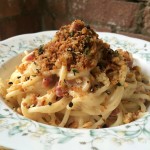
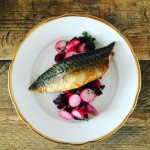
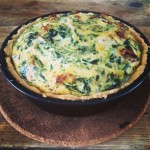
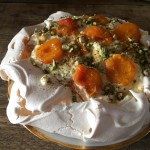
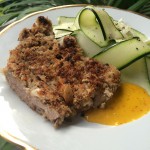
Fantastic post. A really well put together walk through the entire process. When I was a lad (a long time ago) my dad used to be the recipient of birds from shoots occasionally. Often we would have a brace of pheasant or grouse hanging on the basement stairs. Then, when they were hung long enough, we would be brought in to help pluck them. I well remember the kitchen with feathers everywhere. I enjoy cooking game but I don’t agree with some of the methods used here to rear and kill them. Often, on one island based pheasant shoot, they have difficulty getting the birds into the air as the birds tend to run towards the beaters. This is because the beaters are the same guys who have fed the birds up to the day of the hunt. Inexperienced city guns go in parties to “hunt”. It is all a bit of a farce. Still, I enjoy cooking the odd pheasant.
Best,
Conor
What a great post. I am really looking forward to investigating your site further, but on 1st glance, wow, very nicely put together with some great photos. My real love is food and menus so I’m looking forward to digging into them. On this quick overview I think I’m going to enjoy myself. Lovely work.
Jo Dunn says
This is a brilliant post -great writing and excellent photos - very informative. Thank you.
belgaqueen says
Great article… Brought back wonderful memories of 12th’s ….